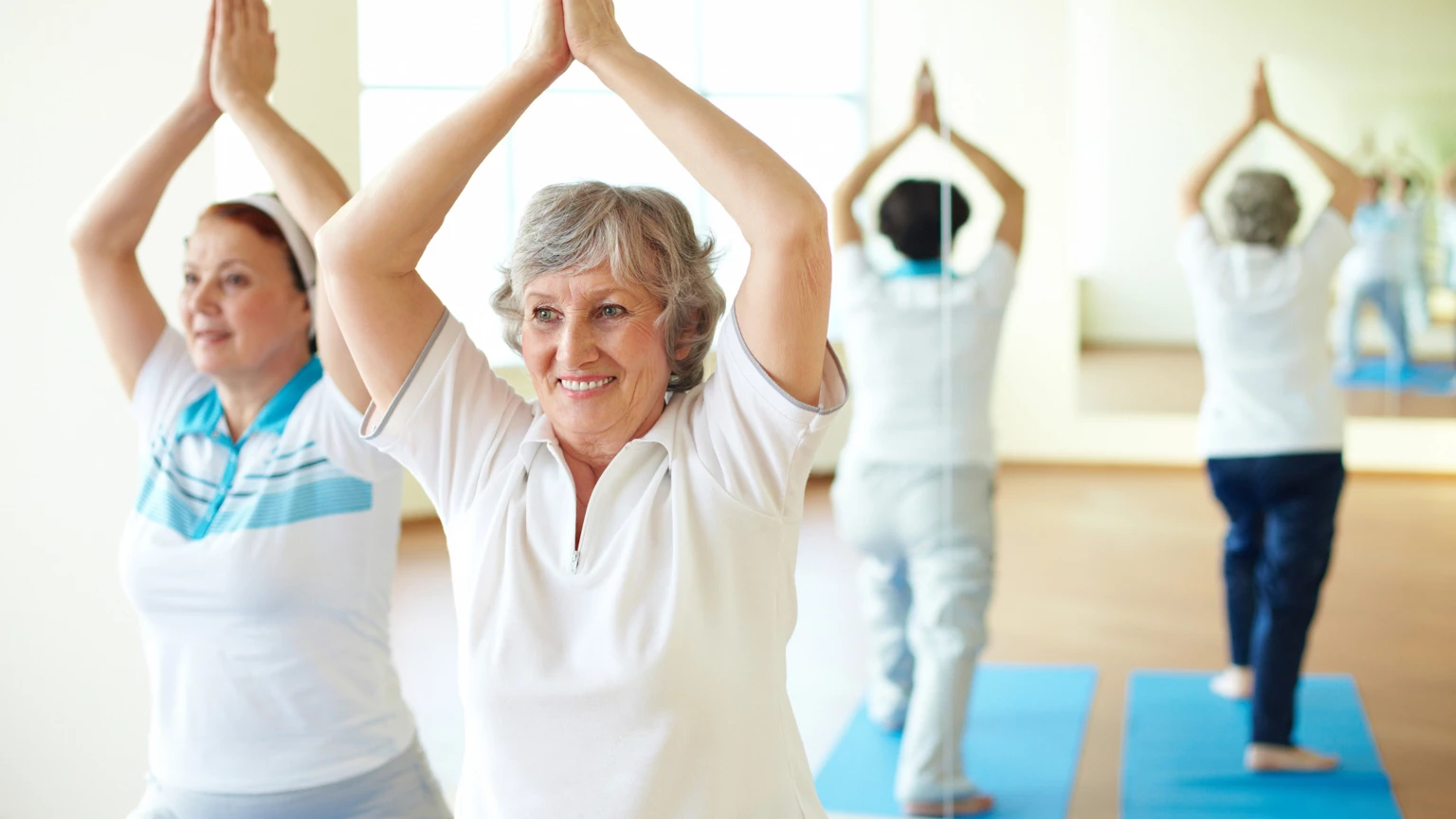Yoga Research: Study Suggests Yoga Can Help Parkinson’s Patients

It’s easy to take the ability to move easily for granted—especially for yogis who enjoy the strength and flexibility that come with regular practice. But when a condition such as Parkinson’s disease attacks the body, simple movements can become a major challenge. It’s not uncommon for doctors to recommend physical therapy and other exercises to help improve muscle strength and flexibility. Given that yoga is known to support muscle health, endurance, and balance in healthy people, researchers at the University of Miami reasoned that yoga could be beneficial for people with Parkinson’s too. And it turns out; their hunch was right.
The idea came about when yoga teacher and graduate student Kiersten Mooney began to take some of the findings from her work with neuromuscular researcher Joseph Signorile, Ph.D., to students at her Florida yoga studio, Green Monkey. Mooney was thrilled to see her students improving and shared her excitement with Signorile.
Being a scientist, Signorile says just the “belief” that certain poses work specific muscle groups wasn’t enough for him. He wanted proof, or, as he puts it, he “… applied his academic prejudice and decided to put a number on it.”
The result was a formal study published in the peer-reviewed journal Complementary Therapies in Medicine. (1)
A Practice for Parkinson’s
The 15 study participants who were lucky enough to be selected for the study took part in a Power Yoga class specially designed to improve muscle speed, strength, and other skills that Parkinson’s can impact.
Most significant to the study was the way the transitions were guided. For one, in these classes, the practitioners were instructed to perform the transitions quickly. Signorile explains that bradykinesia  (the slowness of initiation of voluntary movement with the progressive reduction in speed and amplitude of repetitive actions) causes patients to move more slowly and can even cause them to freeze. By moving the students more quickly and modifying the time sequencing in a safe environment, the theory was that they would take this into their normal life and be able to move more freely in their lives.
(the slowness of initiation of voluntary movement with the progressive reduction in speed and amplitude of repetitive actions) causes patients to move more slowly and can even cause them to freeze. By moving the students more quickly and modifying the time sequencing in a safe environment, the theory was that they would take this into their normal life and be able to move more freely in their lives.
On top of that, instead of linear transitions as tend to be most common in a flow practice, the sequences used in the study incorporated lateral transitions. For example, in moving from Adho Mukha Svanasana (Downward-Facing Dog) to Virabhadrasana I (Warrior I), instead of stepping straight forward, the students were instructed to step to the side to move into Warrior. 
As the study went on and the participants became more familiar with the practice, the poses increased in difficulty. They started with doing primarily standing postures with a few supine and balance asanas thrown in. As they progressed, more complicated poses were introduced.
The patients, who were all around 71 years old, were tested on a few different measures, each of which corresponded with a common symptom of the disease. These included bradykinesia, strength and power, rigidity, and quality of life. After an average of about six years with the disease, all of these patients had at least some degree of issues brought on by their disease.
Improved Symptoms with Yoga
From bicep curls and leg presses to chest press and calf raises, the study participants showed improved strength across the board when compared with similar Parkinson’s patients who continued on regular treatment but without the introduction of yoga.
On top of improved strength, the yoga group had a reduction in their bradykinesia and a significant decrease in their muscle rigidity. Perhaps even more exciting are those study participants also reported an improvement in their quality of life—something that often drops when the disease strikes and symptoms set in.
Signorile and colleagues believe there are more than a few reasons why the yoga practice helped this group. First, the initiation of different movements, moving at different speeds, balancing, and improving flexibility can all be therapeutic to the affected muscles. Then there are the benefits to the brain. It’s known that both bradykinesia and rigidity are caused by a deficiency in dopamine neurons in part of the brain. Yoga, they write, may be able to boost the activity of these neurons.
Despite this being a small study, Signorile says he’s encouraged by the results—especially when you consider that there were only positive results, no adverse effects, and once they started the practice, nearly everyone completed the program. “It’s a wonderful tool. So many people love it, we’ve got to be crazy to not use it,” he says.
Helping Even More Patients
Signorile says the purpose of the work is not just to publish papers; it’s to take the research and translate it into meaningful practices for people with specific needs. That’s exactly what Mooney is doing. She plans to instruct more Parkinson’s patients and even older people at risk for falling through specially targeted classes at Green Monkey.
Signorile says he’s hopeful that word will get around and yoga practice will soon become a more regular part of a Parkinson’s treatment protocol. He’s also eager to spread the news to more instructors so they can take what the research has done and offer more widespread population-specific classes.
As Signorile sees the popularity of yoga spreading, he’s eager to find ways to use the practice to help even more groups with specific health challenges. From people with metabolic disorders as a result of obesity to elderly individuals at risk of falling, he says there’s a way to modify and target yoga practices to improve specific disease states. He has additional studies ongoing now and more planned for the future.
“Why not take something that everybody loves and modify so it can benefit everyone?”
Study with Shawnee Thornton Hardy and YogaUOnline – Yoga for Kids with Special Needs: Focus on Autism and ADHD.
 Liz Rosenblum found her way to the yoga mat as a way to find peace and calm in her crazy former life as a journalist and the days in content marketing. Over the years her practice has focused on an alignment-based style as a way to find relief from chronic hip pain to power yoga to a home practice, but it was Ashtanga where she found her true home and received her RYT-200 at White Orchid in Clearwater, Florida. She is passionate about the power of yoga to heal the mind and body and continues to be amazed that no matter how many times a posture is practiced, one slight adjustment can change it exponentially. She is thankful to have the online yoga community of YogaUOnline as a place to share her passion and learnings with others.
Liz Rosenblum found her way to the yoga mat as a way to find peace and calm in her crazy former life as a journalist and the days in content marketing. Over the years her practice has focused on an alignment-based style as a way to find relief from chronic hip pain to power yoga to a home practice, but it was Ashtanga where she found her true home and received her RYT-200 at White Orchid in Clearwater, Florida. She is passionate about the power of yoga to heal the mind and body and continues to be amazed that no matter how many times a posture is practiced, one slight adjustment can change it exponentially. She is thankful to have the online yoga community of YogaUOnline as a place to share her passion and learnings with others.
Sources
1. Signorile, Ni, Mooney. (2016, February 10). A controlled pilot study of the effects of power yoga in Parkinson’s disease. Retrieved from- https://www.sciencedirect.com/science/article/pii/S0965229916300073



